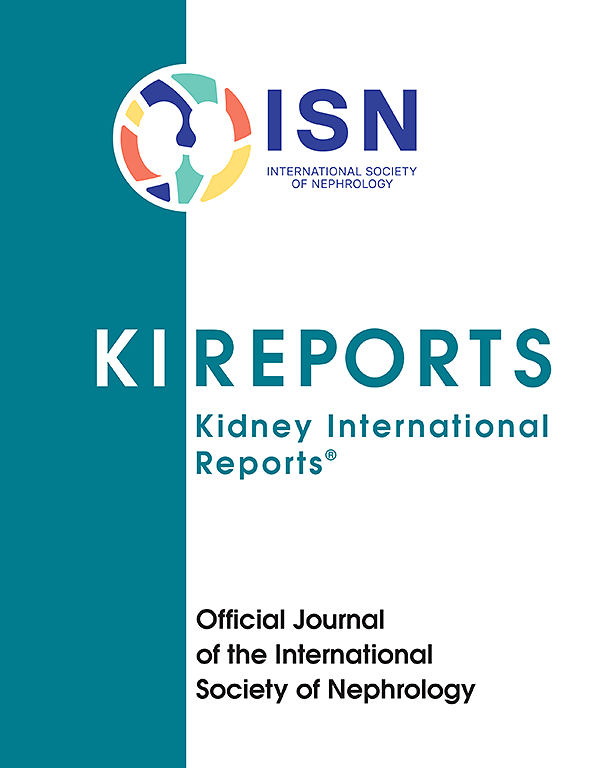Safety and Efficacy of Oral Direct Factor Xa Inhibitors in Patients With Nephrotic Syndrome: Results From a National Retrospective Study
IF 5.7
2区 医学
Q1 UROLOGY & NEPHROLOGY
引用次数: 0
Abstract
Introduction
The optimal management of thromboembolism (TE) in patients with nephrotic syndrome (NS) remains challenging. Until now, anticoagulation therapy for NS consisted of vitamin K antagonists (VKAs) or heparin. Data on direct oral anticoagulant (DOAC) use in NS are limited, and their safety and convenience have been well-demonstrated in other indications.
Methods
We conducted a multicenter retrospective study of adult patients with NS treated with therapeutic-dose anticoagulation between 2014 and 2022. We compared the incidences of bleeding and TE events between patients receiving DOAC and those receiving VKAs or heparin (standard-of-care [SOC]). Patients with end-stage kidney disease were excluded.
Results
The overall population consisted of 144 patients (median [interquartile range] age of 54 [38–67] years, 34.7% women) with a median albumin level at 1.5 (1.2–1.8) g/dl and a median urinary protein-to-creatinine ratio of 8.8 (5.5–12.3)g/g. Membranous nephropathy was the main NS etiology (45.8%). No significant differences were observed between the DOAC (n = 72) and the SOC (n = 72) groups. The anticoagulant strategy was primary prophylaxis in 79.2% of patients taking DOAC and 83.3% of patients with SOC (P = 0.67). DOAC use was not associated with an increased rate of TE (4.2% vs. 0%, P = 0.25) or bleeding events (6.9% vs. 13.9%, P = 0.28) compared with the SOC group. Univariate analysis identified female sex, age > 75 years, and anticoagulant exposure > 90 days as risk factors for bleeding.
Conclusion
This study suggests that DOAC are safer and more effective than conventional anticoagulant strategies for both primary and secondary prophylaxis in patients with NS.

求助全文
约1分钟内获得全文
求助全文
来源期刊

Kidney International Reports
Medicine-Nephrology
CiteScore
7.70
自引率
3.30%
发文量
1578
审稿时长
8 weeks
期刊介绍:
Kidney International Reports, an official journal of the International Society of Nephrology, is a peer-reviewed, open access journal devoted to the publication of leading research and developments related to kidney disease. With the primary aim of contributing to improved care of patients with kidney disease, the journal will publish original clinical and select translational articles and educational content related to the pathogenesis, evaluation and management of acute and chronic kidney disease, end stage renal disease (including transplantation), acid-base, fluid and electrolyte disturbances and hypertension. Of particular interest are submissions related to clinical trials, epidemiology, systematic reviews (including meta-analyses) and outcomes research. The journal will also provide a platform for wider dissemination of national and regional guidelines as well as consensus meeting reports.
 求助内容:
求助内容: 应助结果提醒方式:
应助结果提醒方式:


